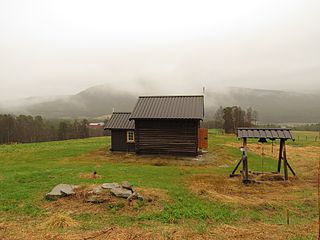Related Research Articles

The Somali diaspora or Qurbajoogta refers to Somalis who were born in Greater Somalia and reside in areas of the world that they were not born in. The civil war in Somalia greatly increased the size of the Somali diaspora, as many Somalis moved from Greater Somalia primarily to Europe, North America, Southern Africa and Australia. There are also small Somali populations in other pockets of Europe and Asia. The UN estimates that in 2015, approximately 2 million people from Somalia were living outside of the country's borders.
Norwegian Vietnamese or Vietnamese Norwegian refers to citizens or naturalized residents of Norway of partially and full Vietnamese descent.
Pakistani Norwegians are Norwegians of Pakistani descent, 65.23% of Pakistanis in Norway live in the capital Oslo. First-generation Pakistani Norwegians, who migrate from Pakistan, are distinguished from the mainstream in several demographic aspects, while second-generation Pakistani Norwegians, who are born in Norway, are well established in Norway and have gone on to become professionals and politicians.
Iraqis in Norway make up approximately 33,924 people. They are mostly refugees from the Iran–Iraq War, the Saddam regime and in particular the Iraq War. Iraqis are the seventh largest immigrant group in Norway after Poles, Lithuanians, Swedes, Syrians, Pakistanis and Somalis.
Immigration and crime refers to the relationship between criminal activity and the phenomenon of immigration. The academic literature and official statistics provide mixed findings for the relationship between immigration and crime. For the United States research tends to suggest that immigration either has no impact on the crime rate or even that immigrants are less prone to crime. A meta-analysis of 51 studies from 1994–2014 on the relationship between immigration and crime in the United States found that, overall, the immigration-crime association is negative, but the relationship is very weak and there is significant variation in findings across studies. This is in line with a 2009 review of high-quality studies conducted in the United States that also found a negative relationship.
In 2017, Norway's immigrant population consisted of 883,751 people, making up 16.8% of the country's total population. Of this number, 724,987 are foreign-born, while 158,764 are Norwegian-born with foreign-born parents. The ten most common countries of origin of immigrants residing in Norway are Poland (97,197), Lithuania (37,638), Sweden (36,315), Somalia (28,696), Germany (24,601), Iraq (22,493), Syria (20,823), Philippines (20,537), Pakistan (19,973) and Eritrea (19,957). The immigrant population comprises people from a total of 221 countries and autonomous regions, but 25% of the immigrants are from one of four migrant groups: Polish, Lithuanians, Swedes and Somalis.
African immigration to Norway refers to immigrants to Norway from Africa. An estimated 131,700 people in Norway are either first or second generation immigrants from Africa. Most of these have a background as asylum seekers.
Filipinos in Norway comprise expatriates and migrants from the Philippines to Norway and their locally-born descendants. As of 2019, there are approximately 25,000 Filipinos in Norway.

Crime in Norway is countered by Norway's law enforcement agencies.

Poles in Norway are citizens and residents of Norway who are of Polish descent. They are the biggest immigrant group in Norway.
Denmark has seen a steady increase in immigration over the past 30 years, with the majority of new immigrants originating from non-Western countries. As of 2014, more than 8 percent of the population of Denmark consists of immigrants. As of Q2 of 2022, the population of immigrants is 652,495, excluding Danish born descendants of immigrants to Denmark. This recent shift in demographics has posed challenges to the nation as it attempts to address religious and cultural difference, employment gaps, education of both immigrants and their descendants, spatial segregation, crime rates and language abilities.
Syrians in Denmark are citizens and residents of Denmark who are of Syrian descent.
Somalis in Denmark are citizens and residents of Denmark who are of Somali descent.
Lebanese people of Denmark are people from Lebanon or those of Lebanese descent who live in the country of Denmark. The majority of Lebanese people came to Denmark in the 1970s and 1980s, either escaping the Lebanese Civil War or for economic reasons. Per 1 October 2016, 26,404 persons in Denmark were of Lebanese origin.
Eritreans in Norway are citizens and residents of Norway who are of Eritrean descent. Most have a background as asylum seekers that have fled Isaias Afwerkis regime.
Somalis in Norway are citizens and residents of Norway who are of Somali descent. They are the biggest African migration group in Norway. 36.5% of Somalis in Norway live in the capital Oslo. Almost all Somali in Norway have come to Norway as refugees from the Somali Civil War. In 2016, Somalis were the largest non-European migrant group in Norway.
Ethiopians in Norway are citizens and residents of Norway who are of Ethiopian descent.
Moroccans in Norway are citizens and residents of Norway who are of Moroccan descent.

Russians in Norway are people born in Russia or whose parents were both born in Russia and who live in Norway.
References
- ↑ "Immigrants and Norwegian-born to immigrant parents".
- ↑ "Tabell 11 Innvandrerbefolkningen, etter landbakgrunn (de 20 største gruppene). Utvalgte kommuner. 1. januar 2007".
- ↑ "Population by immigrant category and country background". Statistics Norway. Retrieved 3 December 2017.
- ↑ "KommuneProfilen. Statistikk og nøkkeltall om antall og andel innvandrere etter land og landbakgrunn i kommuner og fylker - basert på statistikk fra SSB".
- ↑ "Økonomi og levekår for ulike lavinntektsgrupper 2016". Statistics Norway. pp. 57, 117, 118. Retrieved 7 December 2017.
- ↑ "Persons sanctioned, by group of principal offence and citizenship (and category of principal offence -2014). Absolute figures". Statistics Norway. Retrieved 25 December 2017.
- ↑ Innvandrere og norskfødte med innvandrerforeldre fra Syria. Statistics Norway. 26 June 2018. p. 26. Retrieved 14 July 2018.
